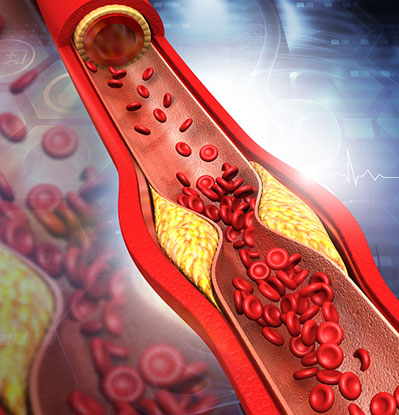Artery Disease: Signs and Symptoms

March 20, 2025
Imagine your arteries as pipes that carry blood throughout your body. Sometimes, fatty buildup on the inside walls of these pipes can make them narrower. This buildup is called plaque.
Doctors call this plaque buildup "atherosclerosis" or "hardening of the arteries". It's the same thing.
Narrowed arteries cause restricted blood flow, which may cause health complications. There are different names for atherosclerosis, depending on the affected arteries:
- Coronary artery disease affects arteries supplying blood to the heart.
- Carotid artery disease affects arteries supplying blood to the brain.
- Peripheral artery disease affects arteries supplying blood to the legs.
Coronary artery disease and carotid artery disease may cause medical emergencies.
“Coronary artery disease puts you at risk of having a heart attack,” says Vikalp Jain, M.D., a vascular surgeon in Neptune, New Jersey. “Carotid artery disease puts you at risk of having a stroke.”
Symptoms of Artery Disease
Many people don’t know that their arteries are narrowing, because symptoms can be silent. Sometimes, a heart attack or stroke may be the first sign of artery disease.
When symptoms are present, they differ, depending on the affected arteries.
Coronary artery disease may cause:
- Chest pain
- A racing heartbeat
- Heart palpitations
- Fatigue
- Shortness of breath
- Swollen feet or ankles
Carotid artery disease may not cause noticeable symptoms before a stroke occurs. Some people first experience a “mini-stroke,” or transient ischemic attack (TIA).
TIA symptoms appear suddenly and are temporary. They may include:
- Numbness or weakness on one side of the body
- Blurry vision or loss of vision
- Confusion
- Trouble speaking or understanding others
- Balance problems
Peripheral artery disease may cause:
- Leg pain or cramping that arises when you walk and fades with rest
- Numbness or weakness in the feet or legs
- Cold feet
- Shiny skin or redness on the legs
- Sores on the feet or legs that take too long to heal
Risk Factors of Artery Disease
These conditions commonly increase the risk of plaque buildup:
High Blood Pressure
High blood pressure may cause damage to blood vessels.
“If there is any damage to the blood vessel, your body will attempt to heal it. This process would place a clot in the artery and then potentially narrow it, which can, over time, become worse,” Dr. Jain says.
High Cholesterol
Tiny, sticky pieces of cholesterol floating in the bloodstream may adhere to an artery wall. People with higher cholesterol levels have more cholesterol circulating in the bloodstream.
“A piece of cholesterol that deposits in a blood vessel will attract more cholesterol,” Dr. Jain says. “Once it becomes big enough, it ends up becoming a plaque.”
Diabetes
High blood sugar levels may contribute to atherosclerosis. People with diabetes may also have high blood pressure and/or high cholesterol levels.
Obesity
Excess body weight strains the heart, muscles and other structures.
“Your blood vessels have to work harder to get oxygenated blood to all of your tissues,” Dr. Jain says. “If they have to work harder, they’re going to be less effective and, as a result, can experience more damage.”
Smoking
Smoking increases risk because of nicotine’s effects on the arteries.
The nicotine in cigarettes makes your blood vessels squeeze tighter. This squeezing is called vasoconstriction. Imagine squeezing a garden hose – the water comes out faster and more forcefully, right?
Something similar happens with your blood. This faster, rougher blood flow damages the blood vessel and makes it easier for plaque to stick to the inside of your blood vessels. This damage also causes even more plaque build-up, which is bad news for your heart and brain.
Healthy Ways to Lower Your Risk of Artery Disease
To decrease your risk of artery disease, exercise regularly, quit smoking, maintain a healthy weight and eat healthily. Follow a low-salt diet with fruits, vegetables and not too much red meat.
Adopt healthy habits in a way that works with your lifestyle. If you try to be too strict, you won’t follow the habits long-term.
“I always tell my patients: It has to be about balance,” Dr. Jain says. “No strategy is perfect for everyone. Look at your own lifestyle and goals, then determine what you are able to do and want to do.”
Next Steps & Resources:
- Meet our source: Vikalp Jain, M.D.
- To make an appointment with Dr. Jain or a doctor near you, call 800-822-8905 or visit our website.
The material provided through HealthU is intended to be used as general information only and should not replace the advice of your physician. Always consult your physician for individual care.







